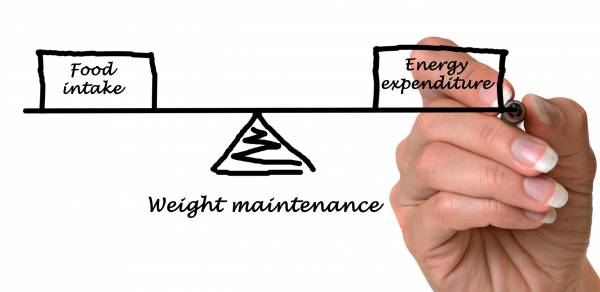Many athletes and coaches estimate their resting energy expenditure so they can better evaluate how many calories they should be consuming daily in order to gain, lose, or maintain weight based on the needs of their sport.
In a recent PLoS ONE study, researchers evaluated existing equations to determine the resting energy expenditure. They used these equations to create new and more accurate ones.
What the research says:
- Two new equations for measuring resting energy expenditure (REE) were proven 83% accurate for men and 72-76% accurate for women.
- An existing REE calculation called the Cunningham Formula was found even more accurate.
![]()

Muscle mass is more metabolically active than fat mass, so if you have an athletic build, the equations you find on the Internet might not accurately determine your energy expenditure. Athletes tend to have more muscle mass per pound of bodyweight, theoretically giving them a higher resting expenditure.
The researchers acknowledged that a further problem with some existing equations is that they rely on information not readily available to most trainees. Because of this, the research team came up with two equations.
- The first accounted for the lean mass of the athlete. If you know your fat free mass (FFM), you can use the following equation, which is simpler than the second equation used in the study. A pinch test or electronic body fat test should be able to give you your FFM.
REE(kcal/d) = 22.771 x FFM(kg) + 484.264
- The second test only accounted for the athlete’s weight and height. This would be a good one to use if the lean mass of the athlete wasn’t known:
REE(kcal/d) = 11.936 x weight(kg) + 587.728 x height(m) – 8.129 x age + 191.027 x sex (M=1,F=0) + 29.279
Study Design
Ninety men and women who exercised regularly had their resting energy expenditures measured using indirect calorimetry. That means the researchers measured levels of oxygen consumption and exhaled gasses to determine how much energy each of the participants used at rest.
The participants weren’t elite athletes, but they were all well-trained. They averaged about nine hours of training every week across five sessions every week. So they were fit recreational athletes, being good representatives of the average active person. They were young as well, averaging about 23 years old.
The researchers then used the various popular equations to determine resting energy expenditure. They compared the results of each equation to the actual energy expenditure as measured by their lab tests to see what was the most accurate. They also attempted to come up with better equations if there was a need.
Results
The athletes’ average daily expenditure, as measured in the lab, was 1,837 calories per day for the men and the women together. The two calculations developed by the research team had about 83% accuracy with men and 72–76% accuracy with women.
When compared to the two equations the researchers came up with, one existing equation called the Cunningham Formula resulted in even greater accuracy. You will need to know your FFM for this one, but it is the simplest equation of all:
REE(kcal/d) = 22 x FFM(kg) + 500
As an example, if my lean body mass is 176lb (my bodyweight minus my fat mass), I need to first convert that to kilograms, which ends up being 80kg. So, 22 x 80kg is 1,760, to which I add 500 for a total resting energy expenditure of 2,260.
With these equations, athletes and coaches will now be in a better position to find out how much they should be eating. Since the Cunningham Formula is the most accurate, use it to determine your resting expenditure and add in your exercise to figure out roughly how many calories you burn per day. If you don’t know your lean mass, use the first equation above.
References:
1. Twan ten Haaf, et. al., “Resting Energy Expenditure Prediction in Recreational Athletes of 18–35 Years: Confirmation of Cunningham Equation and an Improved Weight-Based Alternative,” PLOS ONE 2014, 9(10)
Photo courtesy of Shutterstock.






